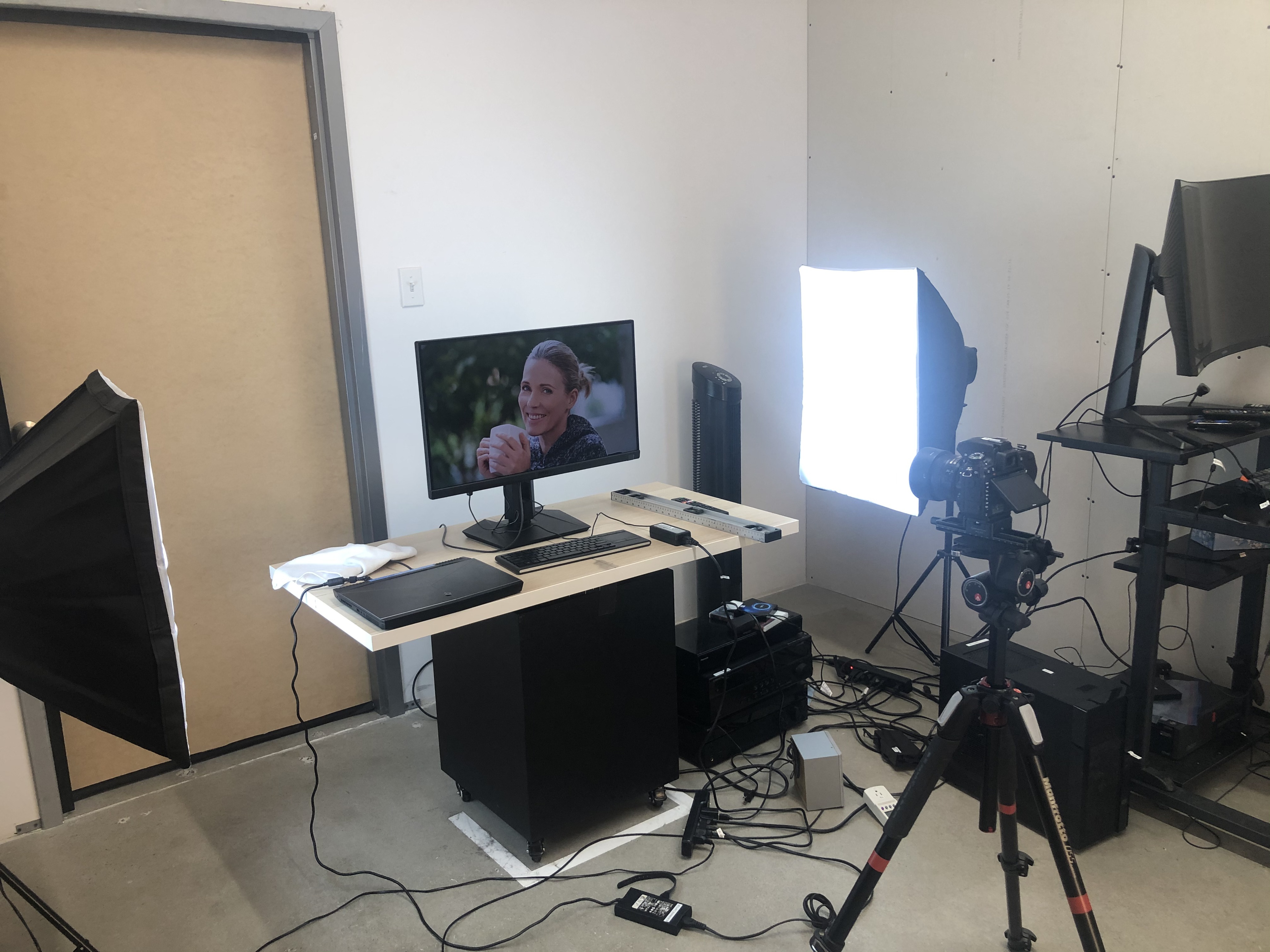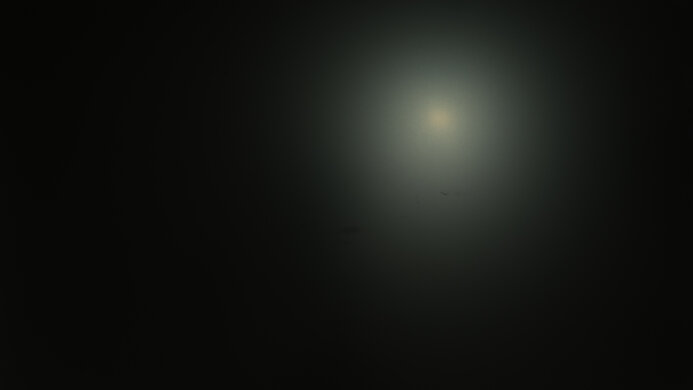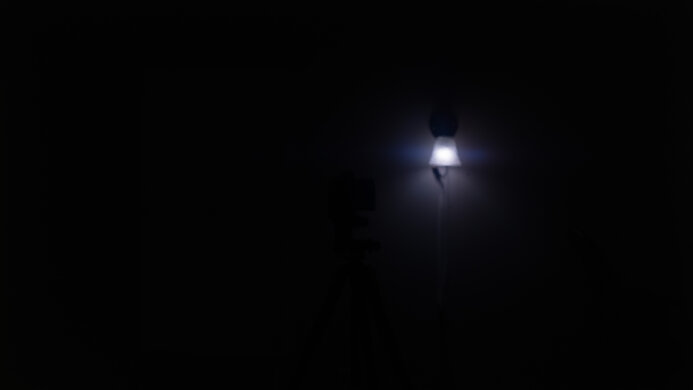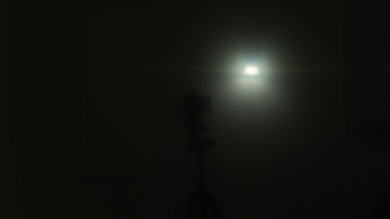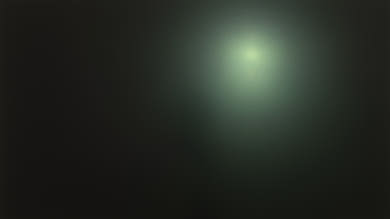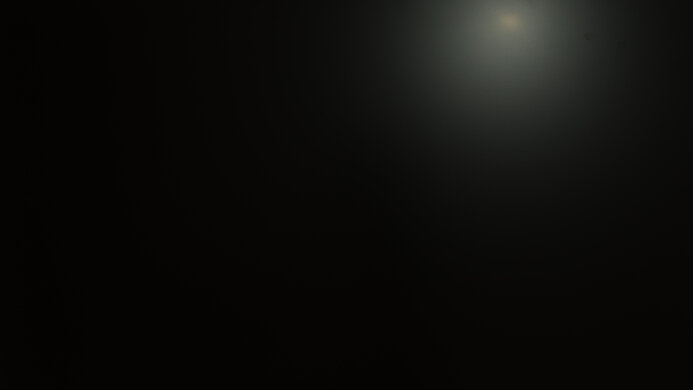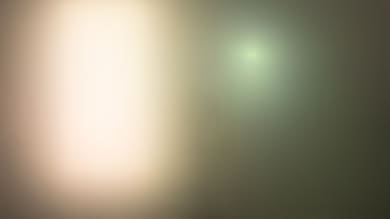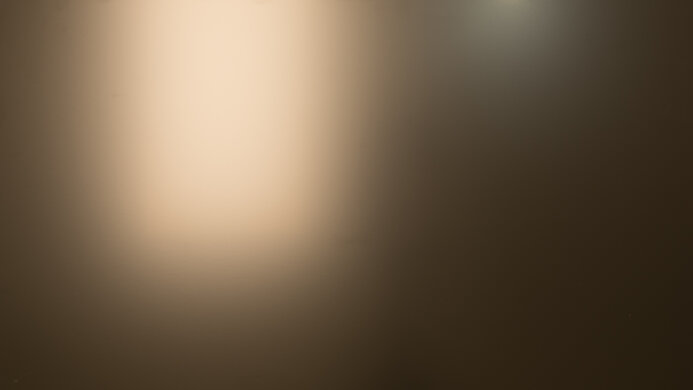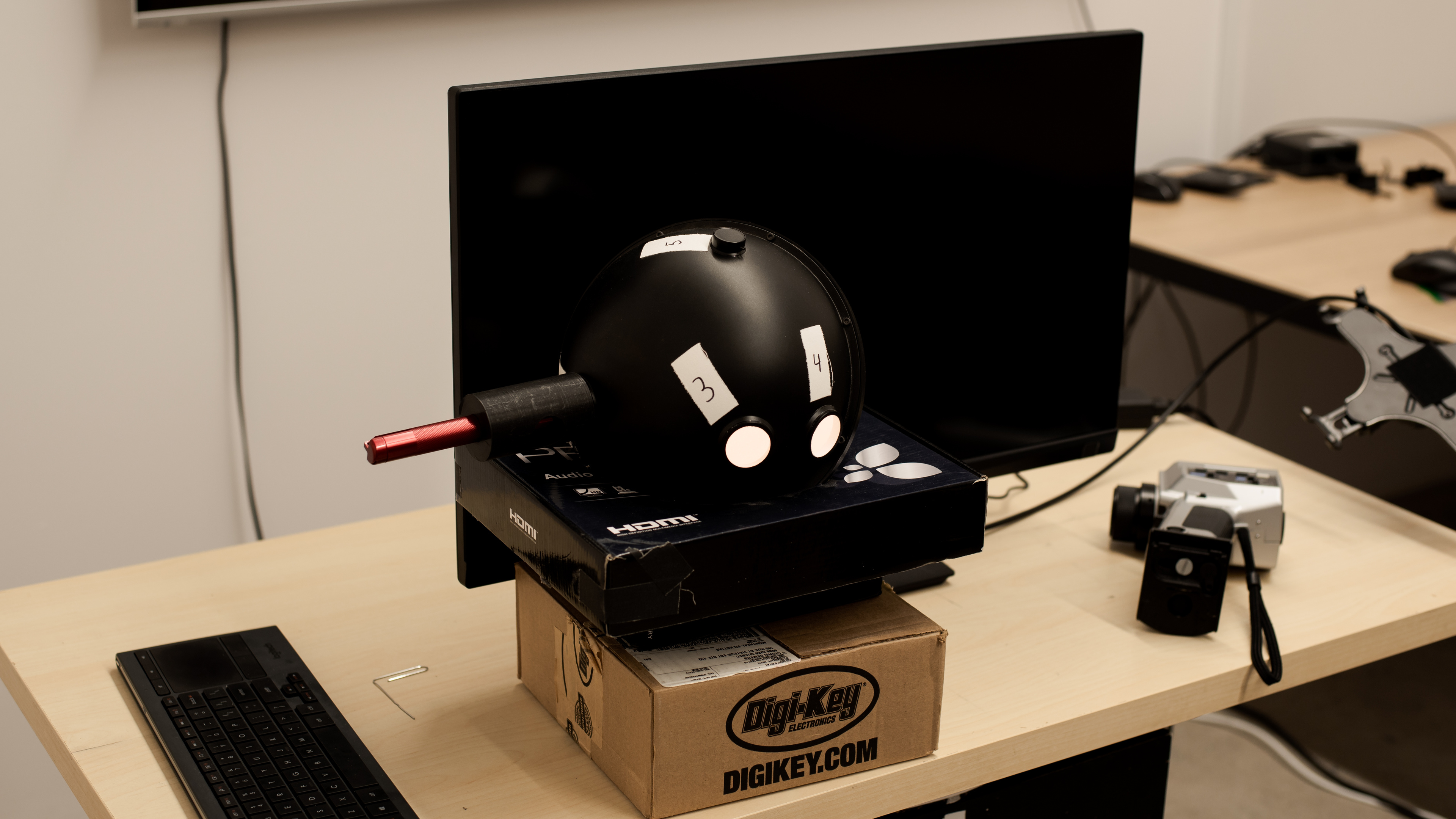- Table of Contents
- Intro
- When It Matters
- Our Tests
- How To Get The Best Results
- Conclusion
- Comments
Our Monitor Picture Quality Tests
Reflections
If you work in a well-lit environment, it may become difficult to properly see your screen if there's too much light on it. Manufacturers have implemented ways to help reduce the amount of glare reflecting off the monitor, such as coming up with different screen finishes. Although having a monitor with high peak brightness is arguably the biggest factor for combatting glare, it's also important to get one with good reflection handling.
We test a monitor's reflection handling similar to the way we test reflection handling on TVs, which you can read about here.
Test results
When It Matters
Having a monitor with good reflection handling is important if you work in a well-lit room. If you work in a dim or moderately-lit room with only a couple of small light sources, you probably won't have any visibility issues by setting your monitor's brightness to the max. However, if there are a few lamps, windows, or direct sunlight on your monitor, it's beneficial to have a screen that handles reflections well; otherwise, glare may become distracting, and it may be hard to see the screen. When watching your favorite content in a well-lit room, too much glare may also affect the perceived picture quality, and images may look washed out and inaccurate.
Our Tests
When you shine light on a display, the screen naturally absorbs some light, while the rest gets reflected back. We want to see how much light is absorbed and how much is turned into reflections. There are two things we do to see how well a monitor handles reflections, but only the second test affects our scoring. In the first part, we take pictures of the screen with light sources directed towards it to simulate being in an average or bright room. These photos help the user visually see how good the reflection handling is.
In the second part, we measure the amount of light being reflected off the screen using a light-diffusing sphere. This helps calculate the amount of light being directed off the screen and how much is absorbed. Some monitors reflect light directly back, kind of like a mirror, while others diffuse the light across the screen, which are called indirect reflections. The tests let us know how the screen interacts with light.
Screen Finish
A display screen is layered with a type of coating to help absorb light and reduce the total amount of reflections. There are three common types of screen finishes: matte, semi-glossy, and glossy. The large majority of monitors have a matte finish, which absorbs and diffuses light, resulting in less noticeable reflections. One downside to a matte finish is that colors don't appear as vivid as they should and the colors may even seem a bit hazy or fuzzy. On the other hand, there aren't many monitors with a glossy finish, and that's usually found on TVs because they make colors pop more and improve picture quality, but there are more direct reflections, like a mirror. Manufacturers have come up with a compromise with semi-gloss finishes that are a hybrid between both and can be found on either TVs or monitors.
As you can see, the matte finish diffuses the light across the screen, the glossy finish reflects it back, and the semi-gloss finish is a mix of both.
Picture (Average Room, On)
The first thing we do to test a monitor's reflection handling is take a picture with a small light source on the screen to simulate what most rooms would be like. We place a small lamp facing the screen and use the monitor's calibration settings to get the most accurate image possible. We make sure there aren't any fingerprints on the screen, as oil may cause more reflections, and we take a picture of the monitor.
Below you can see the differences between a monitor with disappointing reflection handling on the left, the LG 32UD99-W, and one with impressive reflection handling on the right, the Dell S2721D. Both have a matte finish, and you can visibly see that the picture on the right is easier to see.
Picture (Average Room, Off)
We repeat this process of simulating the amount of light in an average room but with the monitor off. We use the same light setup as the 'Average Room (On)' picture, but this time we can see how well the light is reflected and diffused across the screen. Below are pictures of the same two monitors above. It's clear that the LG doesn't do as good of a job at absorbing the total amount of light, and therefore, more light is scattered across the screen.
Picture (Bright Room)
Lastly, we keep the monitor off and use more light sources, including a large lamp and ceiling light, to simulate using the monitor in a bright room. Unlike the pictures in an average room, we only take pictures with the monitor off. This is useful if you work in a really bright room or if your monitor is placed opposite a window with direct sunlight on it. Once again, below are two pictures of the same monitors as before. If you're using the LG in a really bright room, the reflections may become too distracting.
These three pictures that we take aren't actually factored into the scoring, but they're there for reference to visually see how a monitor looks with light sources on it.
Total Reflections
In the next step, we want to calculate the total amount of reflected light that comes off the monitor. A screen reflects light in two ways: with direct reflections, where the light comes straight back like a mirror, and indirect reflections, where light is diffused across the screen. To measure the total amount of reflections, we need a torch lamp, an integrating sphere, and a Konica Minolta LS-100 Luminance Meter.
In a dark room and with the monitor turned off, we place the sphere on the screen, put our light source inside the sphere, and the light is spread evenly across the screen. We use the luminance meter to measure the total amount of light coming from the light source and the amount of light being reflected off the screen. This gives us the amount of reflected light in terms of a percentage of the total amount of light placed on the screen. For example, a monitor with 5% total reflections actually absorbs 95% of the light being directed to it.
Indirect Reflections
Our indirect reflections test measures the amount of light that diffuses across the screen. As mentioned before, when light hits the screen, it's either absorbed, reflected to the source like a mirror, or is scattered across the screen. Matte finishes typically diffuse the light across the screen, creating an effect where the light looks like a hazy circle. This measurement is important for rooms with a few lights, but none that are directly on it, such as if you're in a room with a window, but the sun isn't directly shining through it.
We use a similar process as when we measure the total reflections, using the same sphere and torch lamp. However, this time the sphere is rotated so that the light directly reflecting off the screen comes back out through the sphere. Any light that reflects off the screen like a mirror isn't counted for in this test, and we just want to see the amount of light that scatters across the monitor. Once again, we measure the indirect reflections as a percentage of the total light displayed on it; a monitor with 3% indirect reflections has 97% of light either being absorbed or reflected outwards.
Calculated Direction Reflections
Finally, we also want to know the percentage of light that's being reflected off the screen like a mirror. Calculating this is really simple: we subtract the indirect reflections percentage from the total reflections, and this gives us the calculated direct reflections. Essentially, the direct reflections and the indirect reflections add up to the total reflections. So, if a monitor has 2% direct reflections and 3% indirect reflections, that means 5% of the total light is being reflected, while the other 95% is absorbed by the screen. Knowing the amount of direct reflections is good if you have light sources facing towards the screen, as it can get distracting if there are too many reflections going into your eyes.
How To Get The Best Results
In terms of improving the actual reflection handling, there isn't much you can do. However, you can reduce the total amount of glare by moving the screen away from light sources, and if possible, into dim rooms. If you have a desktop at the office and can't move it, try raising the monitor's brightness settings, as many monitors can easily get bright enough to fight glare.
Conclusion
Having a monitor with good reflection handling is important if you work in a well-lit room. You don't want too much light reflecting off the display, or it can be distracting and even hard to see the screen properly. Most monitors have an anti-glare coating that absorbs the majority of light directed towards them. Different types of coating react with light in their own unique ways, and most monitors have a matte finish that diffuses light across the screen in an attempt to reduce the amount of glare. If you still have trouble seeing your screen in a well-lit room, you can also try to raise the monitor's brightness or position it away from light sources.
